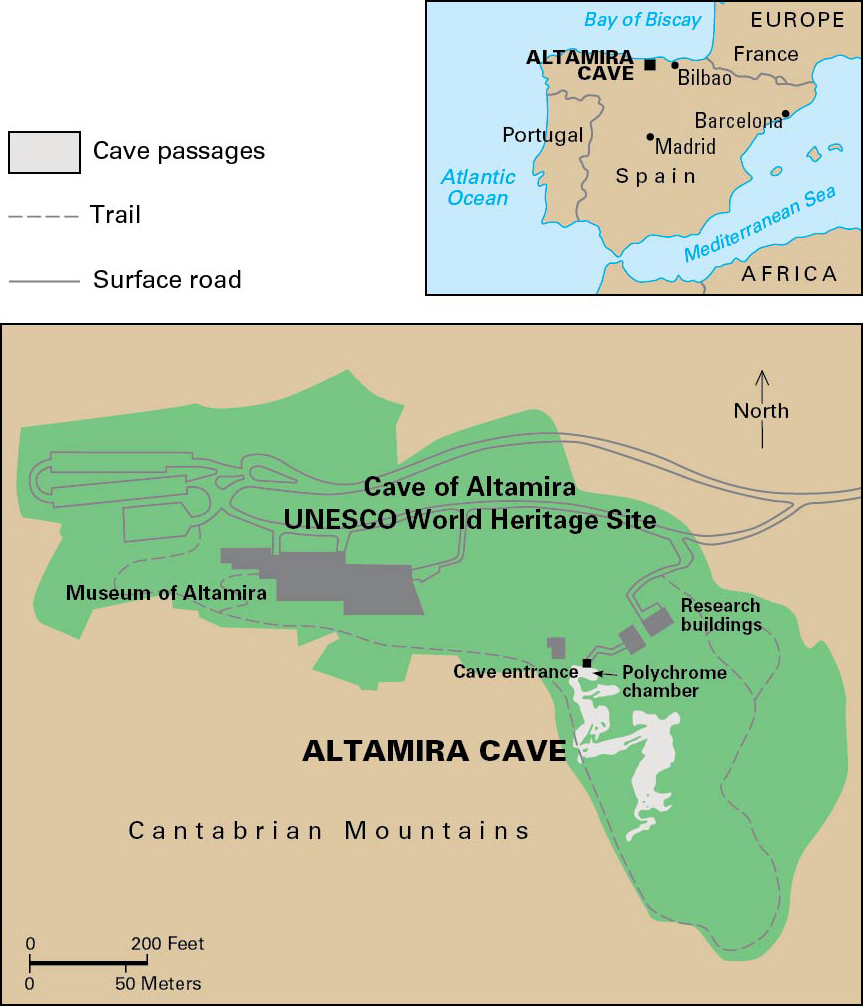Altamira Cave is a site in northern Spain famous for the prehistoric paintings on its walls. The cave lies near Torrelavega in the Cantabrian Mountains. Archaeologists have determined that prehistoric people lived in the cave and made the paintings at two different times during the Upper Paleolithic, a period during the late Stone Age. People of the Solutrean culture first occupied the cave about 20,500 years ago. Later, people of the Magdalenian culture lived there and made paintings about 18,000 years ago. Prehistoric people abandoned the site by about 13,000 years ago after the entrance collapsed, sealing the cave.

Altamira Cave measures about 890 feet (270 meters) in length. It consists of a series of passageways and chambers that have ancient paintings. One chamber near the cave entrance is known as the polychrome (many-colored) chamber for the striking colors of its paintings. Its ceiling bears 30 spectacular paintings of bison. Researchers believe that a single artist made them all. The chamber also has many other paintings and engravings. Most of them show various animals that the prehistoric occupants hunted. But the images also include eight human figures who appear to be wearing masks.
The prehistoric painters at Altamira were skilled artists. They used naturally occurring pigments (coloring materials), such as charcoal, manganese, calcite, and red and yellow ocher. They worked with the natural contours of the cave walls to give the paintings a three-dimensional quality.
A young girl discovered Altamira Cave in 1879. She led her father, an amateur archaeologist, to the site. At first, many experts did not believe prehistoric people made the paintings. They thought that the paintings were too finely crafted and the colors too fresh. About 20 years later, experts accepted that the paintings were ancient after comparable paintings were discovered at other sites in western Europe.
Since 1977, Altamira has remained largely closed to the public to protect the fragile paintings. Only a small number of visitors are allowed into the cave each year. In 1985, the cave and its surroundings were declared a World Heritage Site by the United Nations Educational, Scientific and Cultural Organization (UNESCO). UNESCO considers such sites to be areas of unique natural or cultural importance. In 2001, a museum with replicas of the cave paintings opened near the cave.
See also Chauvet Cave; Lascaux Cave.
